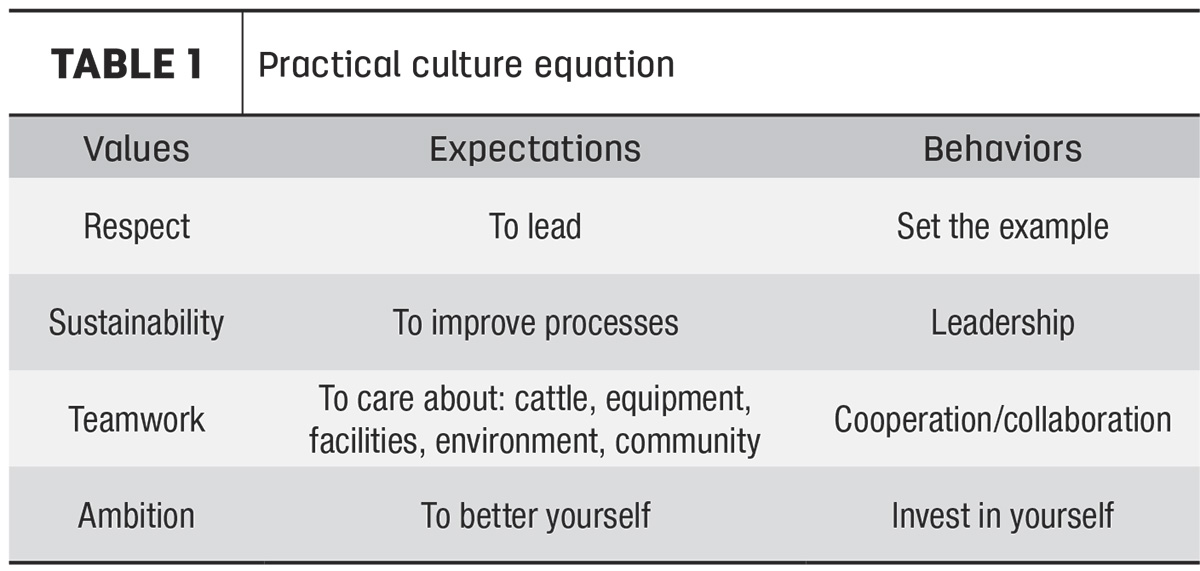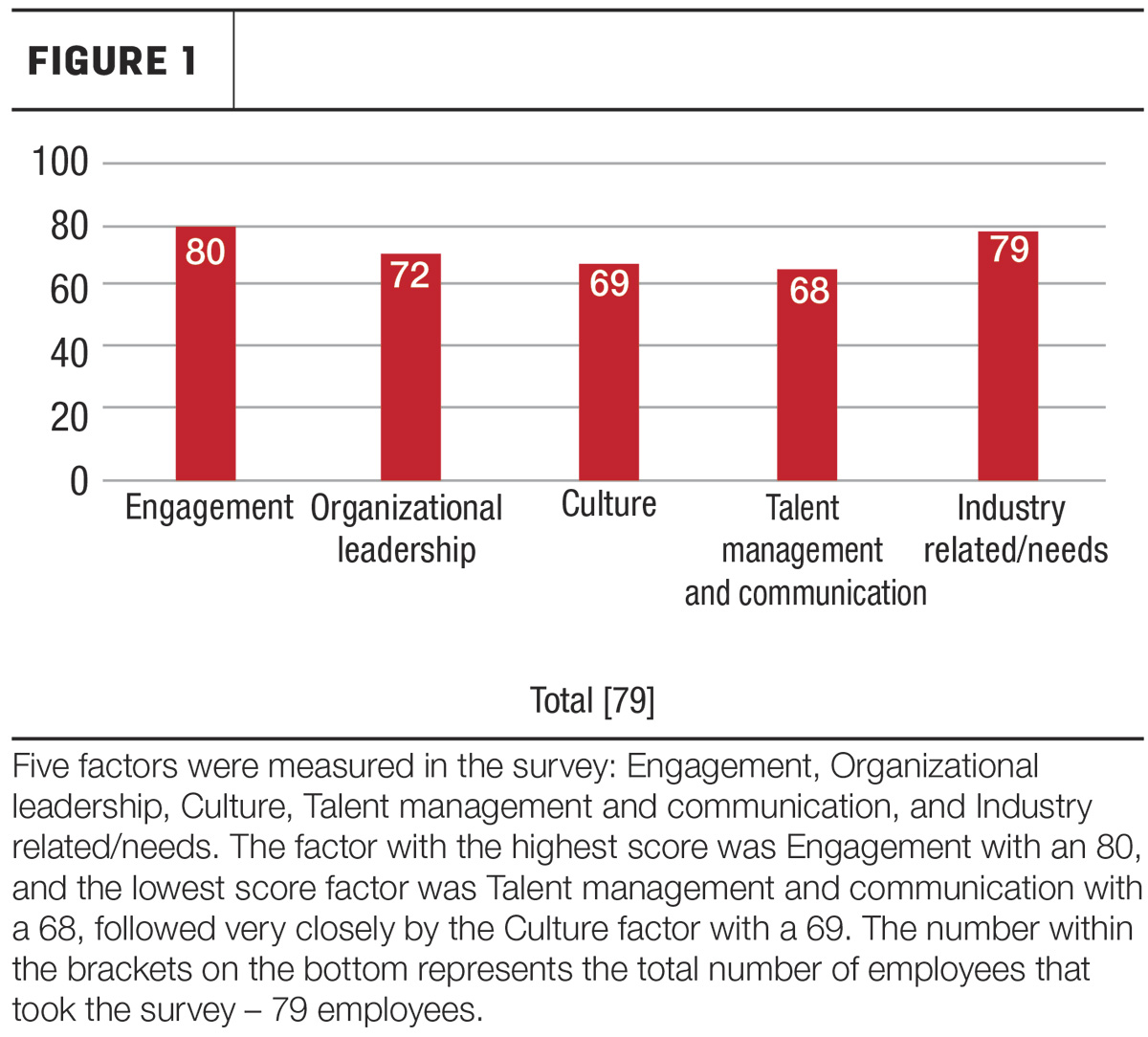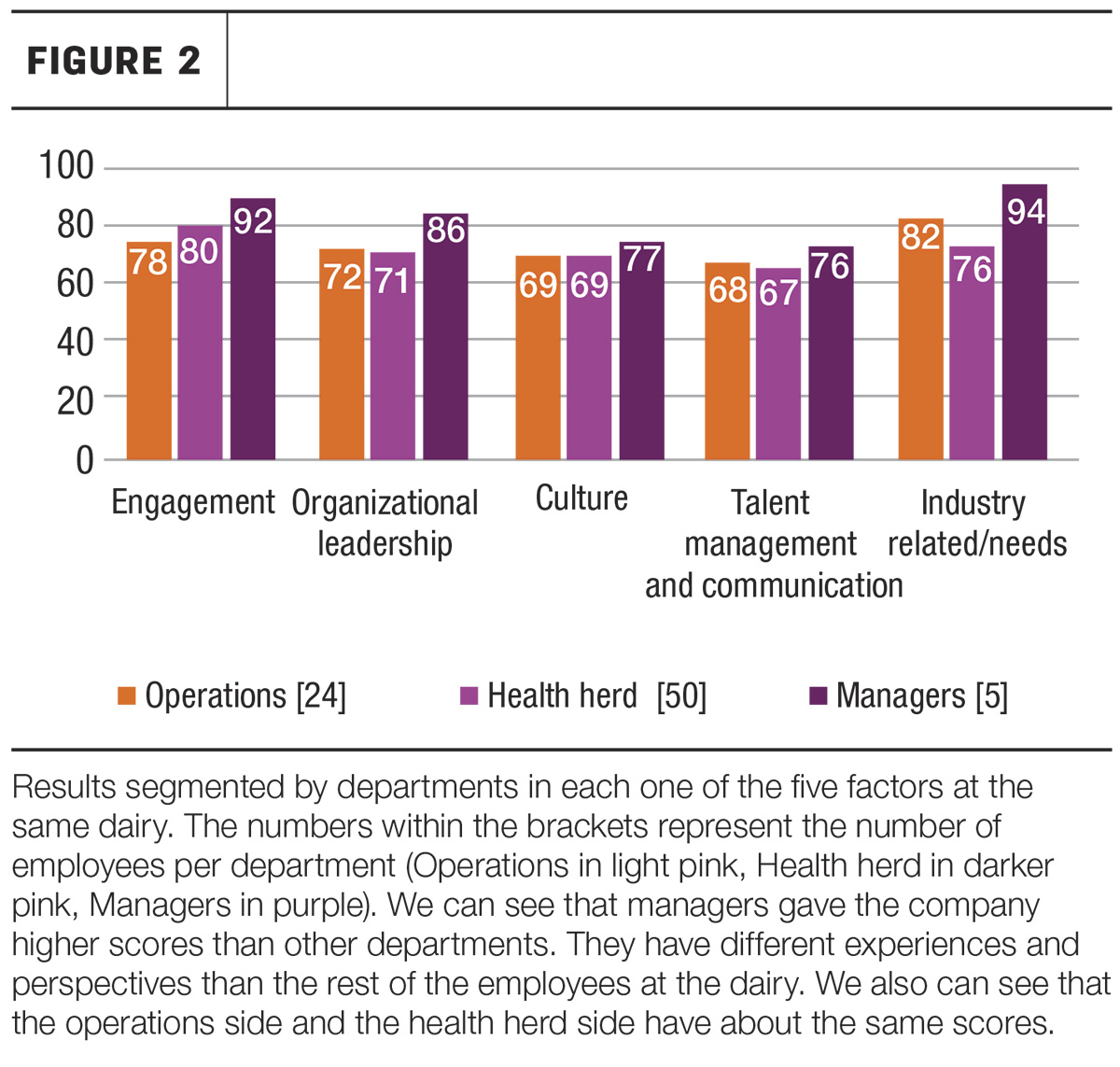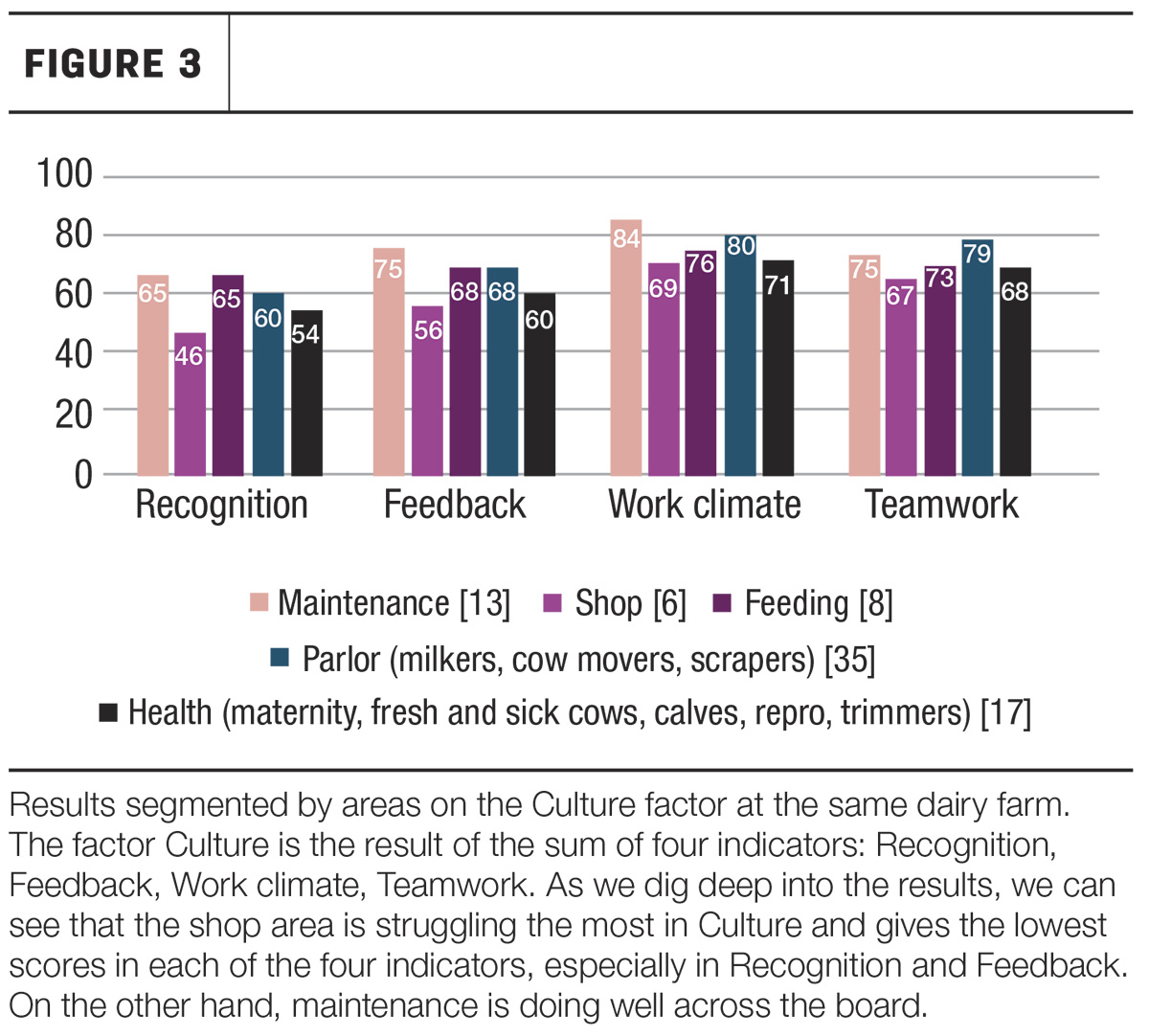Employee turnover and lack of engagement are common reasons why owners and partners call us in to help. When we do our initial assessment, one of the questions we always ask all leadership members is what culture means (or is) for them. We also ask them to describe the culture they perceive exists in the operation.
As you can already imagine, we have received a wide variety of answers over the years. Many have even told us that there is no culture on their dairy and that it is probably one of the leading causes of employee turnover. And yes, they are partially correct in their assessment. I say partially because it is not true to say there is no culture on a dairy. Culture exists whether it has been deliberately designed by senior leadership or simply left to chance.
What is culture?
We completely agree with J. Martin, Ed.D. who defined culture as, “That’s the way we do things around here.” But when we go to an operation to improve culture, we must come up with tangibles – something we can explain and put in play by everyone at the dairy (something concrete). This is why a few years ago, we came up with a simple practical equation for organizational culture.
Culture = values + expectations + behaviors (desirable and undesirable behaviors). In Table 1, we describe it with some examples.

Let’s take, for example, the value of “teamwork” that most operations will share. Partners or the senior leadership team set the expectations for all employees to care about the cattle, environment, facilities, community and equipment. For this “to care about” to happen, all employees must exhibit behaviors of cooperation and collaboration, helping each other whenever possible.
Another example from the table above is the value of “ambition.” Partners are ambitious and would like their employees to be the same. Ambition is a value that has driven this company to grow in past years. Thus, the expectations partners have of their leaders and employees is that they better themselves from week to week and month to month. How can employees better themselves? By investing in themselves: asking to attend seminars or classes, improving their soft skills, taking technical classes, or maybe taking English or Spanish classes. Many owners and general managers we have had the opportunity to work with love to help employees grow technically and personally.
Why is company culture important?
We have seen partners and executive leadership teams mistakenly discount the importance of company culture and harm the operation’s performance. Culture is the unique way the organization lives out its purpose and values. An intentional and well-developed culture engages employees, increases safety, boosts compliance, sustains high performance and allows you to attract talented employees.
Once the senior leadership team has developed their culture intentionally, the next step is to align it. Culture alignment is the process of aligning purpose, values, goals and desired behaviors among all the people in the operation, and yes, we are including the new employee.
Throughout the years, we find this step to be one of the most challenging to execute. Alignment means that everyone in the operation (partners, shareholders, employees and prospective employees) thinks and talks in the same way. Culture alignment also provides direction for leaders and middle managers and helps all employees understand where to put time and energy. Besides explaining “how we do things around here,” culture alignment also helps all employees be aware of why priorities might change.
Does toxic culture exist?
In recent years, we have been asked to try to fix a “toxic culture.” Is there such a thing as toxic culture? We believe when leaders are not practicing the company’s core values, or they are changing expectations and allowing undesired behaviors to repeat constantly without any consequence, leadership is sending conflicting messaging. As a result, the culture of an operation becomes confusing for employees, and all this can be interpreted as a toxic culture. We usually call this a “failed culture.”
Why should we measure culture?
Survey results and data obtained will provide valuable insight into the values and overall work culture of an operation. Measuring organizational culture offers several benefits such as:
- Employee engagement
- Employee retention
- Increased productivity
- Company alignment
- Improved safety
- Quick adaptation to change
When we measure organizational culture, we can also determine company alignment and provide data analysis to the senior leadership team to focus on; what gets measured, gets done!
How do we measure the culture of an operation?
We have been working over the last nine years to measure work climate and culture in cattle operations. We have found that anonymous surveys are the best way to get honest and valuable feedback to the senior leadership team regarding the organization. When using anonymous surveys, employees open up and give you straight and honest answers. Especially when they feel safe that there will be no retaliation from their supervisors. This is why when we do surveys at farms, we guarantee the respondents their complete anonymity.
Our standard survey model in our surveys measures five factors and fourteen indicators that provide excellent data to analyze and discuss with the leadership team. Then we can create a plan to address the needs of the organizational culture and work climate. In Figures 1-4, you’ll see examples from a dairy where 79 employees participated in our standard survey to measure culture. A score of 100 would mean that employees are completely satisfied with that facet of the company. We like to focus on scores below or around the total average of the operation and then go from there to develop an action plan that will strengthen and reflect the company's culture.

An anonymous survey can provide very valuable data that can be used to analyze and determine which departments and areas may need help. There might be leaders in the department who need help or coaching on how to structure a message of one of the company’s core values: teamwork. Furthermore, when we are analyzing results, correlations can be made with the level of employee engagement or the lack of it, or employee retention issues, etc.



Tips to successfully create your own employee surveys
Throughout the years, we have found that for a survey to be successful, it does not have to be fancy, on a tablet or use any sophisticated software. Paper and a pencil with the questions on what you want to measure are enough. Nonetheless, we think five conditions must be met:
- Define the objectives: Answer to yourself, “What do I want to measure?” In our case, we always want to listen to and receive feedback from employees about the company, measure job satisfaction, identify the level of communication, etc.
- Honesty: If employees want to see changes that will help them to have a better experience working in your dairy, ask your employees to answer the questions honestly.
- Anonymity: One of the most common mistakes we have seen is when doing a survey, owners and supervisors want employees to write their names on the survey. For employees to express themselves freely, they need to feel safe, and anonymity helps them to do this.
- Publish results: All employees of the organization in all areas and departments need to be presented with the results obtained. This exercise of transparency helps build trust.
- Develop the message: Once the executive leadership team discusses and decides what they want to improve, build a message around it and transmit it to all employees in the organization.
Summary
When we measure the culture of an operation, we gain valuable insight that can provide us with the data and needs that the senior leadership team must address to create and sustain a culture of excellence instead of a failed culture, or a culture simply left to chance. When we do not measure culture, we do not have any idea if the employees clearly understand the message the partners or the senior leadership team have built to have a successful and healthy operation.
A quote from John E. Jones III is a good one to keep in mind: “What gets measured gets done, what gets measured and fed back gets done well, what gets rewarded gets repeated.”









